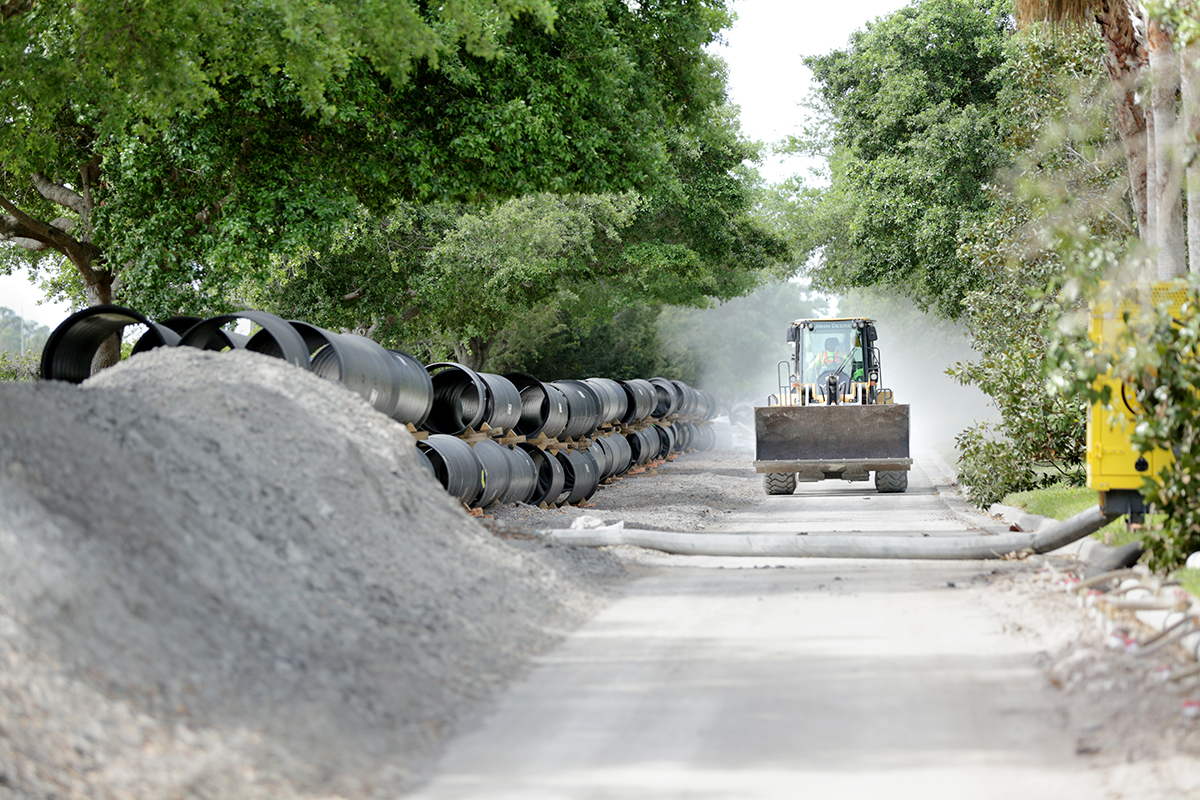
Orange County Manages Supply Chain Issues with Agility and Adaptability
It has been three years since the COVID pandemic, but its effects, along with international conflicts and inflationary pressures, are still creating issues for governments in obtaining goods and services. Supply chain slowdowns have affected access to materials and how they are delivered to their final destinations. In 2024, although slowdowns have lessened, they still linger. Orange County has not been immune to the challenges and continues to manage these disruptions with ingenuity and efficiency.
For Orange County Utilities, virtually all materials were delayed from 2021-2023, resulting in project durations being extended between nine and 18 months, depending on the design and materials required. Contracts were awarded, but contractors could not mobilize at sites until enough materials were delivered for installation.
“Where possible, items were procured in advance of the project to allow the contractor to begin construction immediately,” said Brian Matejcek, chief engineer, Orange County Utilities. “Construction periods continue to be reevaluated based on updated timetables for needed products. Planning ahead helps reduce risk where possible, resulting in saving time and controlling costs.”
As far as the procurement process is concerned, when trying to get supplies with completion dates for upcoming projects, it has been challenging to predict realistic lead times. Contractors often must find alternative sources for supplies, paying more for them. The results are their bids get higher and therefore exceed what the project budget allows for.
“We’ve had to augment this funding gap,” asserted Carrie Mathes, chief procurement officer, Orange County. “Sometimes no opportunities exist to secure additional funding, and in those cases, we had to cancel solicitations or delay projects until there’s more stability in the market.”
Mathes and her team have looked at solicitation structure, provisions and requirements to be as fair as possible to the local business community. This has involved restructuring contract terms, which resulted in increased competitive bids while being fair to vendors/contractors.
“The key is to keep projects moving forward, maintain the budget and be fair to the business community,” she explained. “We’ve hosted focus groups with industry organizations to understand their pain points, and we’ve taken this information back to see what’s feasible. This has paid dividends for us.”
Traffic Engineering has also faced both an increase in price and lead time delays of up to 12 months when it comes to the installation of traffic signals, but adaptability and flexibility have helped the division weather the storm.
“We’ve used alternate contracting methods to begin the requisition process early,” explained Humberto Castillero, manager, Traffic Engineering Division, Orange County Public Works. “We also use three contractors instead of two to start construction as soon as design is completed.”
He added: “Safety is our biggest priority, regardless of supply chain issues. We continue to deploy safety solutions using in-house resources while also engaging our vendors and contractors in the bidding and procurement process to start construction as soon as possible.”
While supply chain slowdowns have led to inevitable and unavoidable delays for certain Orange County projects, the County continues to develop and deploy strategies that have minimized these delays and maintained strong relationships with community partners.
